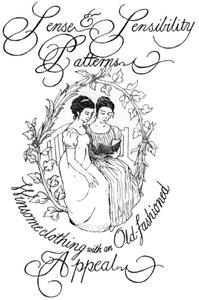1909 Formal Gown
[gallery link="file" size="medium" columns="2" ids="3633,11828,11830,11829"]This beautiful 1909 formal gown was sold on eBay by USVainen, a past seller whose knowledge of vintage fashion was astounding and whose descriptions were delightful. This seller graciously agreed to let me share her images and words on my site, and I think you'll enjoy them as much as I have!
This dress was designed with the 1909 fashion aesthetics: very tall willowy figure with a marked waist sash. This style is the transition from the over-endowed Gibson Girl to the waistless silhouette shapes of the next 4 years. The silk is very sturdy and fortunately is unweighted (weighted silks tend to disintegrate prematurely and lasts the years only with extreme care). I do not see any shattering at all with this thin and elegant material.The Edwardian stiffened high neck is visible in the ecru colored lace at the top of the bodice. Contrasting fern green dyed lace is interwoven in the ecru as a frame drawing the onlooker's eyes naturally to the face of the wearer. The pattern in the silk and the wavy lines of the green lace are hallmarks of the art nouveau period in fashion. The art nouveau movement (which was led by artists such as Alphonse Mucha and T. Steinlen, and Beardsley), was a counter reaction to the heavy industrialization that defined the end of the last century. Art Nouveau dealt with flowing lines and curves and tended to be very effete (contrasting with the machine age designs which were very masculine). The flowing intersection of the two laces was a construction design meant to add flattering femininity to the underdefined shapes of the wearer's bust while also providing a multi colored arrow continually drawing the eyes to the woman's faceThis dress has an interesting dichotomy in the form of the bold contrasting black silk trim, fabric, and fabric-covered buttons. While the green lace of the sleeves and neckline are complementary to the ivory of the silk, the very art deco black lines make an interesting and surprising contrast to the flowing art nouveau influences. Large buttons used solely as trim and with no functional purpose would be one of the most common decoration devices in dresses and suits during the 1908-1918 period and this dress is interesting in that it is reflecting both the art nouveau softness and curves as well as the art deco harsh dark lines and circles. The black trim does, however, accomplish the effect of further drawing the eye up towards the face with its perfect frame and symmetry.

